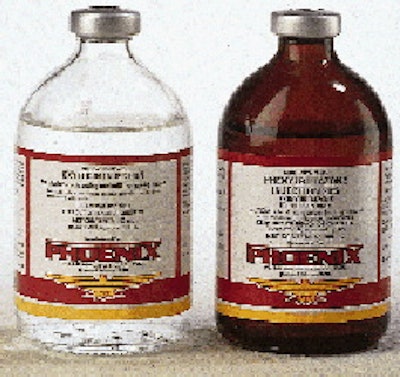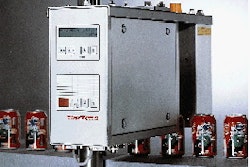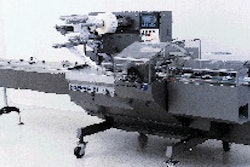Veterinary pharmaceutical products maker Phoenix Scientific found itself in a pinch: It could no longer obtain replacement parts for its aging liquid fillers, yet it found prices for new machines to be "staggering." That's the word used by Phil Garcia, vp of liquid pharmaceutical production. "Preliminary quotations were over two hundred thousand dollars per machine," he tells Packaging World. "We were hoping to find something for less than a hundred thousand." The St. Joseph, MO-based company fills liquid drugs for veterinary use in a Class 100 clean room. The 100-mL glass bottles are sealed with a rubber stopper and aluminum crimp overcap. At the same time Phoenix was investigating new machinery, its supplier of used equipment, packaging machinery rebuilder HealthStar(TM) (Quincy, MA), was planning to enter the new machinery market for the first time. The two companies agreed to work together to fashion a design that would satisfy Phoenix's need for a filler that used easy-to-replace, off-the-shelf parts, without sacrificing accuracy. The first machine employing the new design was one of Phoenix's existing in-line time-pressure fillers that HealthStar stripped down to its frame and rebuilt. HealthStar also built an all-new machine based on the same design. The new machine has been running since September '97, operating at 80 bottles/min. For Kevin Schinze, Phoenix's president, the overriding reason behind choosing HealthStar boiled down to service: "With HealthStar, we were able to influence how the machine was built," he recalls. "We obviously wouldn't be able to do that with a larger supplier. They tell you what they offer, and if it fits your needs, that's great." Nitrogen flush The line starts out as bottles are manually placed onto a slowly rotating turntable that feeds the bottles to a conveyor. Bottles, which enter the machine in groups of eight, are conveyed directly underneath the eight nitrogen flushing nozzles and subsequently eight filling nozzles. A conveyor gate holds the bottles in position under the two sets of eight nozzles, which dive into the bottles. The first eight nozzles inject gaseous nitrogen into the empty bottles. "Some of our products are oxygen sensitive," explains Garcia. "Nitrogen flushing increases product stability and the shelf life of the product." Shelf life is two to three years, depending on the product. According to Garcia, nitrogen is heavier than oxygen. When the bottle is filled, most of the headspace that remains consists of the residual nitrogen. As the first group of bottles is being flushed, a second group of eight nozzles fills the eight bottles that were flushed on the previous cycle. During filling, the nozzles slowly ascend, which greatly minimizes foaming, according to Garcia. "Also, nozzles come out of the bottles clean, without a lot of product clinging to them." That keeps bottles drip-free. After a fill is completed, the gate retracts and the eight filled bottles are released and conveyed to subsequent stoppering and aluminum crimping stations, both older machines. Bottles are warehoused unlabeled, then subsequently pulled from inventory for labeling. Products are labeled with the names of Phoenix's drug distributor customers after they place their orders. Phoenix sells product under its own label, too. Accuracy is critical Filling accuracy is critical for this high-value product. (The company declined to comment on product pricing.) The accuracy of this time-pressure filler stems from its pressure transducer, which applies extremely steady pressure to the product in the header tank for a preset time duration. As the machine dispenses the liquid, it is simultaneously refilling the header tank. By maintaining a consistent level of product in the header tank during filling, fill volumes remain constant. "If we were to vary that pressure even by a tenth of a pound, we'd get a different fill volume," explains Garcia. Variations in pressure are also prevented by a special rigid hose that feeds the header tank from a product hold tank outside the filling room. It's made of silicon but has a rigid wire in it to prevent flexing. "If the hoses were to flex as pressure was hitting and releasing and hitting, that would cause the fill volume to vary also," says Garcia. "The hose is almost like a rigid pipe." Fill accuracy consists of "virtually zero percent" fluctuation, says Garcia. "If we had a more accurate way of checking the volume we would probably find that it's better than plus or minus one percent." Expanded recipe memory Changeover of the filler is quite simple, according to Garcia, and takes about 10 minutes with very few tools. Cleaning, however, takes about 45 minutes. The electronic part of changeover consists of selecting a preprogrammed product setup on the machine's keypad. Although the machine originally came with a 16-product memory capacity, Phoenix had it expanded to accommodate over 100 product and size combinations. Phoenix also had the control programming modified to permit the nozzles to start their descent toward the bottles even before bottles are in position. That increased throughput without any adverse effects. Phoenix also wanted to be able to refine the fill volume on the fly, a feature that's used to make final, critical adjustments to the fill volume at the beginning of a batch. This flexibility on the part of HealthStar led Phoenix to place an order for another new machine. "That was what really impressed us about HealthStar," says Garcia. "They were willing to crate the machine, take it back, and reprogram it the way we wanted it."
























